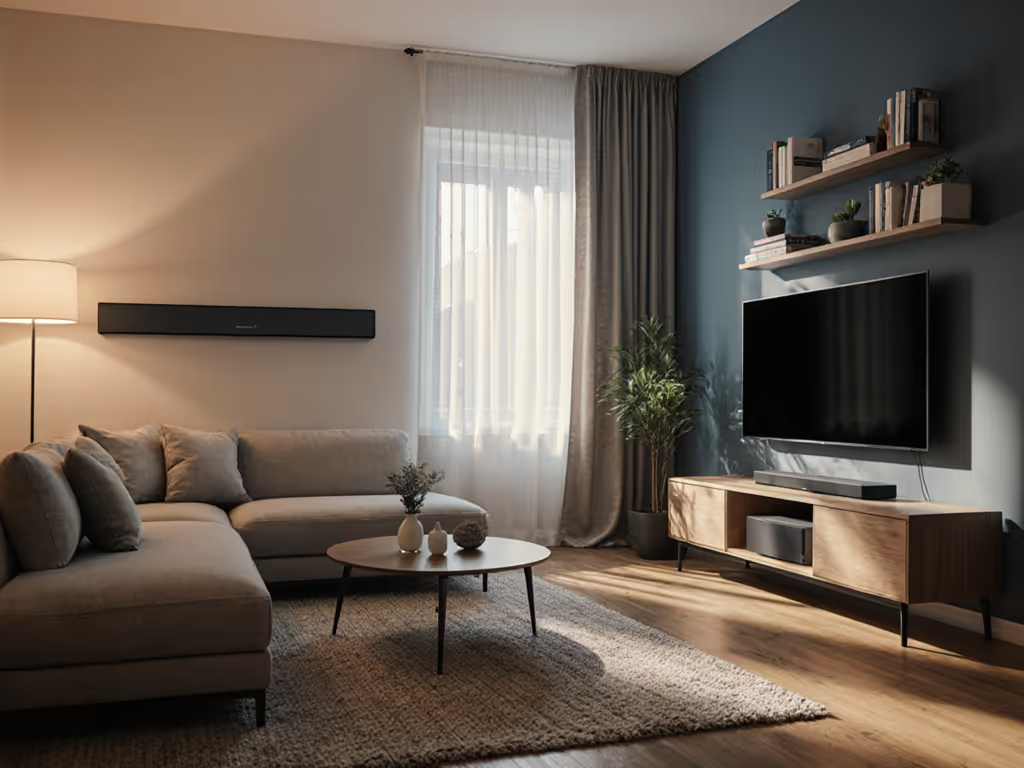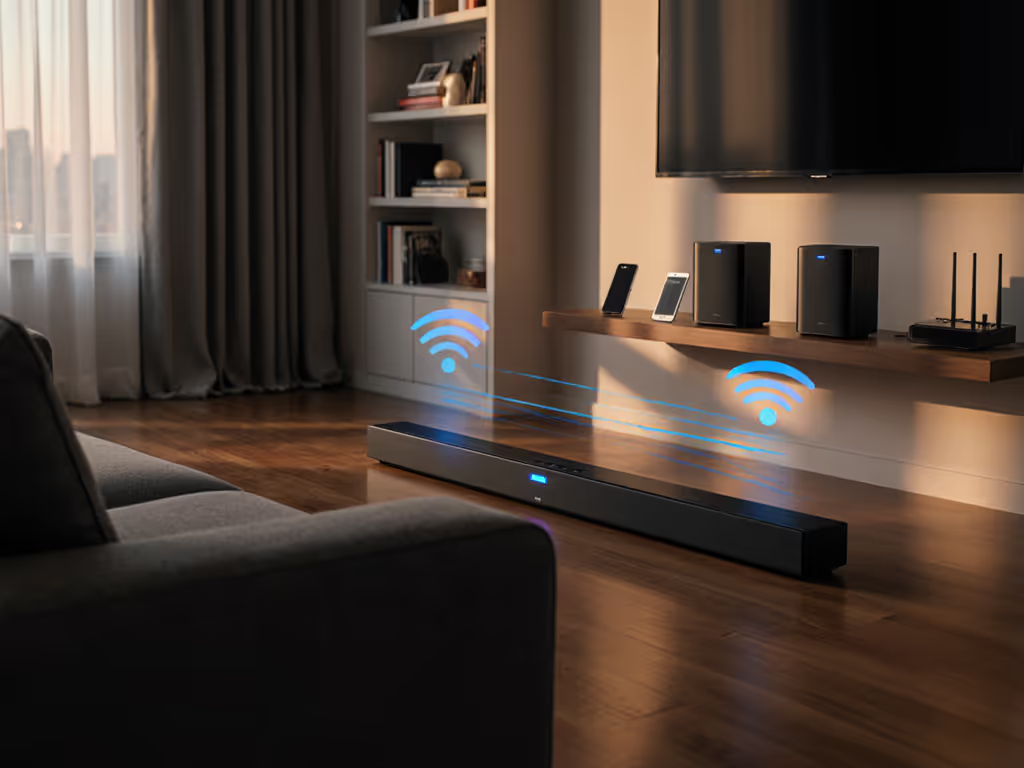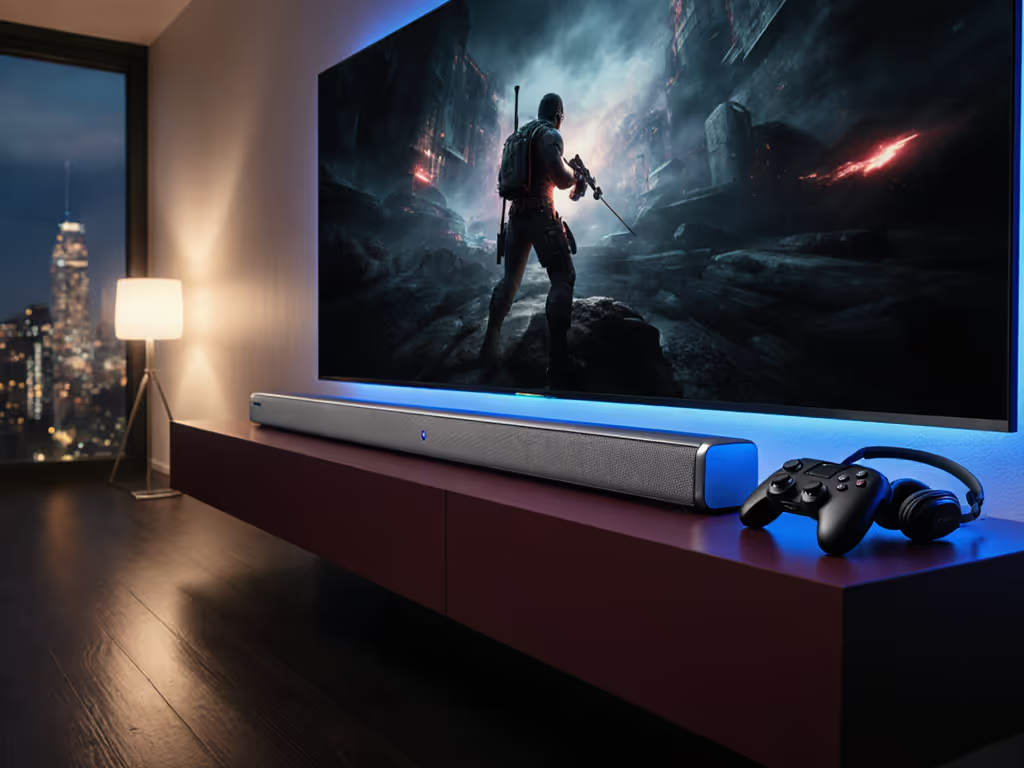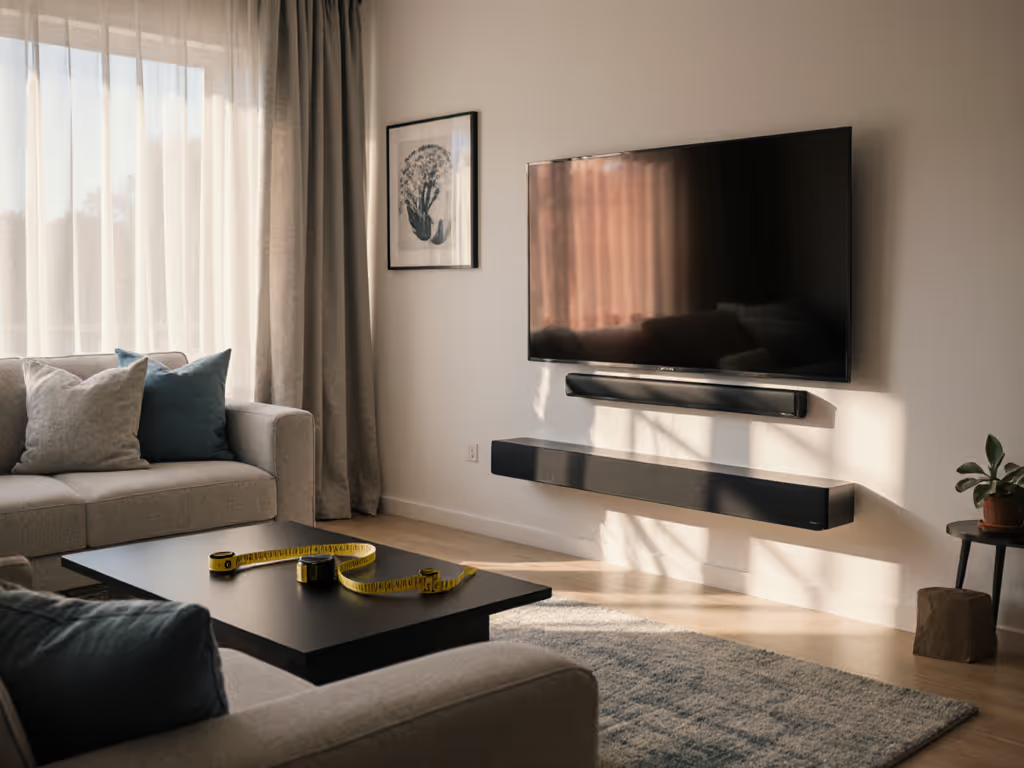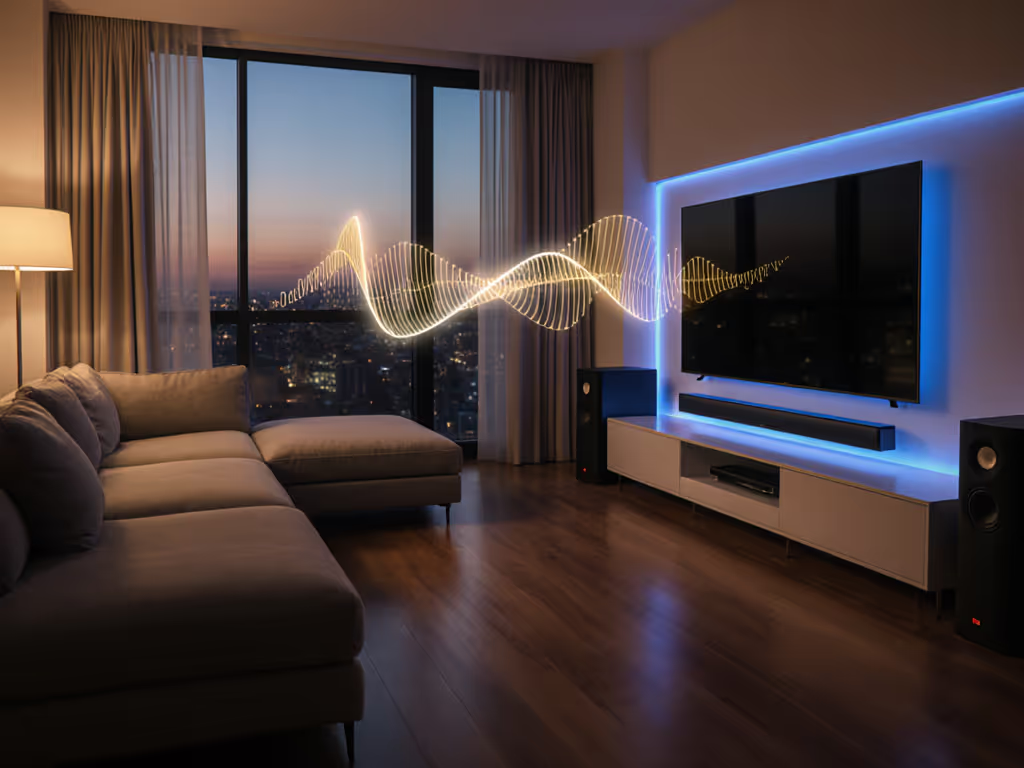
Best Soundbar Brands Compared for Real Living Rooms
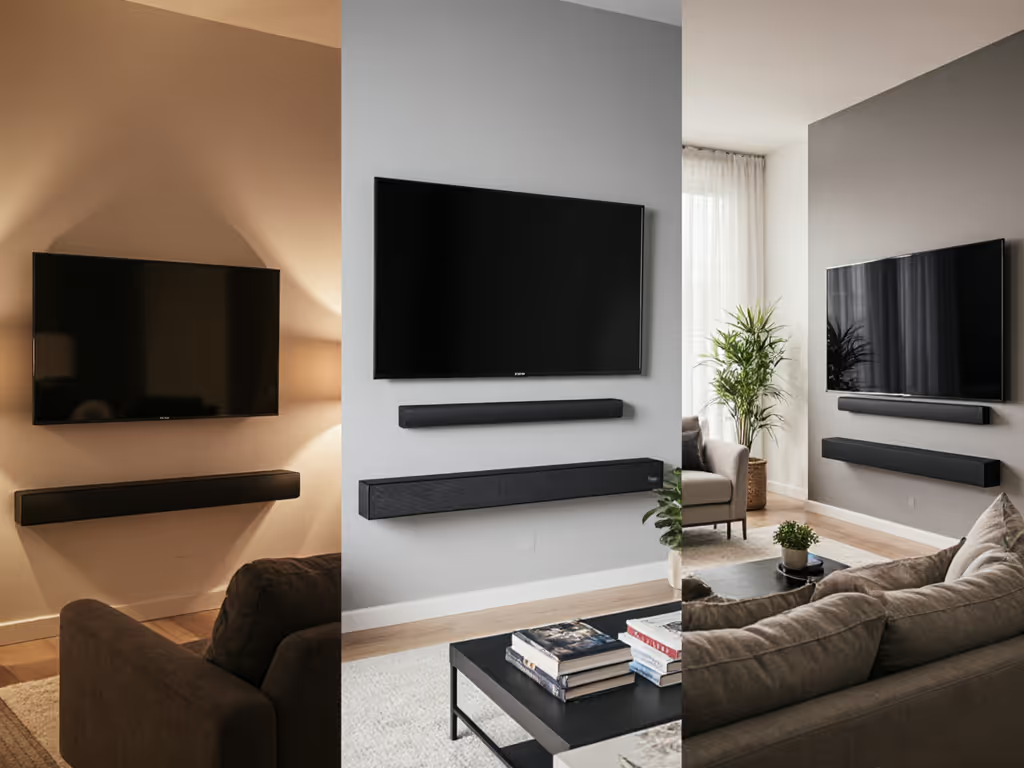
Forget the spec sheets. When you're choosing between a samsung wireless soundbar and sony audio bar, what really matters isn't raw power, it's whether your family can actually hear the whispered confession without waking the baby or rewinding three times. That movie night after bedtime? Explosions felt thin while whispers vanished. Everyone kept asking, 'What did they say?' I finally enabled dialogue lift, night mode, and trimmed the sub. One remote finally controlled everything. We finished the film comfortably, laughing instead of rewinding, nobody tiptoed past the nursery door. That's the harmony you deserve.
As a home viewing optimizer, I've seen real families struggle with muddy dialogue and cable chaos. You're not buying a sound system, you're buying shared enjoyment. Let's cut through the noise with a practical soundbar brand comparison focused on your living room reality.
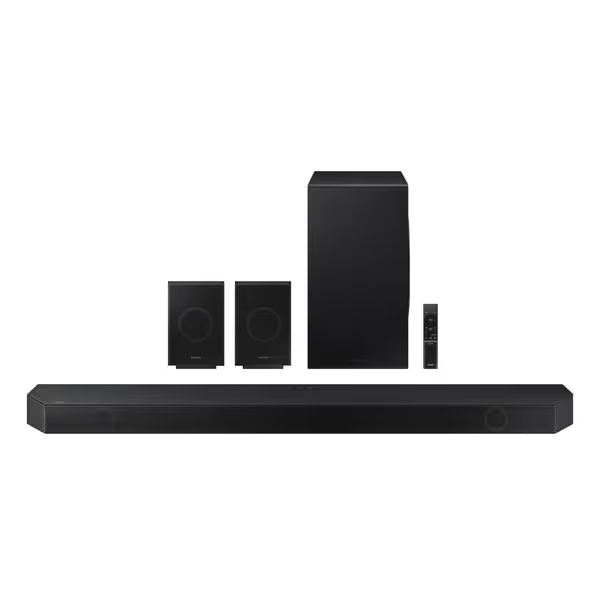
Samsung Q990D 11.1.4ch Soundbar
Why "Premium" Doesn't Mean "Loud"
Too many shoppers chase maximum SPL (sound pressure level), only to discover their partner approval rate plummets when neighbors knock. True premium soundbar brands prioritize comfort volume, where whispers stay clear even at 30% volume. Remember: If you can't hear whispers, it isn't immersive.
Clarity at comfortable volume isn't a luxury, it's the backbone of shared enjoyment and everyday harmony.
Your Quiet-Hours Reality Check:
- Apartment dwellers need bass that feels impactful below 85dB (no subwoofer rattling walls)
- Parents require dialogue enhancement that doesn't create tinny, artificial voices
- Gamers need latency under 40ms (without sacrificing vocal clarity during stealth segments)
- Open-plan living rooms demand spatial cues that anchor dialogue to the screen For room-perfect results across different layouts, follow our soundbar placement guide.
This is where soundbar ecosystem comparison shifts from marketing to meaning. Let's see how Sony and Samsung solve real problems.
Sony's Dialogue-First Intelligence: Precision Over Punch
Sony's flagship HT-A9000 (not to be confused with older models) exemplifies their dialogue-first philosophy. It uses 360 Spatial Sound Mapping to create phantom speakers, not just bouncing sound off walls, but precisely placing dialogue in the center channel where it belongs. No more straining to catch mumbled lines during tense scenes.
Why it shines for real homes:
- Adaptive Room Calibration: Analyzes your actual furniture layout (not just empty space) to optimize sound reflection paths. Critical for rental furniture or L-shaped couches.
- HearDialogue™ Processing: Isolates voices from background noise without the "underwater" effect common in cheaper bars. Works even with optical audio (no eARC needed).
- Gaming Mode: 27ms latency with 4K/120Hz passthrough, and it prioritizes footstep audio over explosions. Crucial for competitive gamers in shared spaces.
Real-Life Fit: Ideal for medium rooms (12x15 ft) with moderate ceiling height. The magic fades in cavernous open-plan spaces where physical rears (like Sony's optional SA-RS5) become necessary. But for dialogue-focused clarity? Unmatched.
Samsung's Room-Filling Power: Full-System Impact Out of the Box
Samsung's Q990D takes the opposite approach: one-remote harmony through brute-force hardware. This samsung wireless soundbar includes wireless rears and a 10" subwoofer, delivering true 11.1.4 surround sound immediately. No "upgrade later" guesswork.
Why it solves apartment headaches:
- SpaceFit Sound Pro: Uses both soundbar mics and your TV's microphone (on compatible models) to map bass traps. Prevents corner-boominess in small rooms.
- Adaptive Sound+: Dynamically balances dialogue volume scene-by-scene. Whispery drama? Voices lift. Explosive action? Bass softens automatically.
- Q-Symphony: Syncs with Samsung TVs to use both TV and soundbar speakers, filling awkward gaps where phantom speakers fail (like hallways).
Real-Life Fit: Best for larger rooms (18x20+ ft) or open-plan zones. Overkill for studios, but ideal when you need to hear dialogue clearly from the kitchen. However, its rears require visible rear speaker placement, which is tough in rentals with strict no-drill policies.
The Critical Comparison: Beyond the Headlines
Let's cut through the marketing with your actual pain points. This soundbar brand comparison focuses on real living room tradeoffs:
Dialogue Clarity at Comfortable Volumes
| Feature | Sony Approach | Samsung Approach |
|---|---|---|
| Dialogue Enhancement | AI-powered voice isolation (works with any audio source) | Scene-based Adaptive Sound (requires compatible TV) |
| Whisper Handling | Superior in small/medium rooms | Good, but rears can sometimes drown voices |
| Night Mode Effectiveness | Preserves vocal detail at 25% volume | Aggressive compression (can thin voices) |
Verdict: For best sound bar tv experiences where dialogue trackwin is non-negotiable, Sony wins in rooms under 300 sq ft. Samsung catches up in larger spaces with its full speaker array.
One-Remote Harmony & Quiet-Hours Peace
Both brands nail CEC (TV remote control), but Samsung's Tap Sound feature (tap phone to bar = instant Bluetooth) is genius for chaotic households. Yet Sony's superior quiet-hours plan implementation prevents accidental volume spikes.
The Setup Reality Check:
- ✅ Sony: Calibrates in 90 seconds. No TV mic needed.
- ✅ Samsung: Q-Symphony requires compatible Samsung TV. Frustration alert if you own a LG or Sony TV.
- ❌ Both: Avoid optical audio if you want Atmos, eARC is mandatory for true height effects.
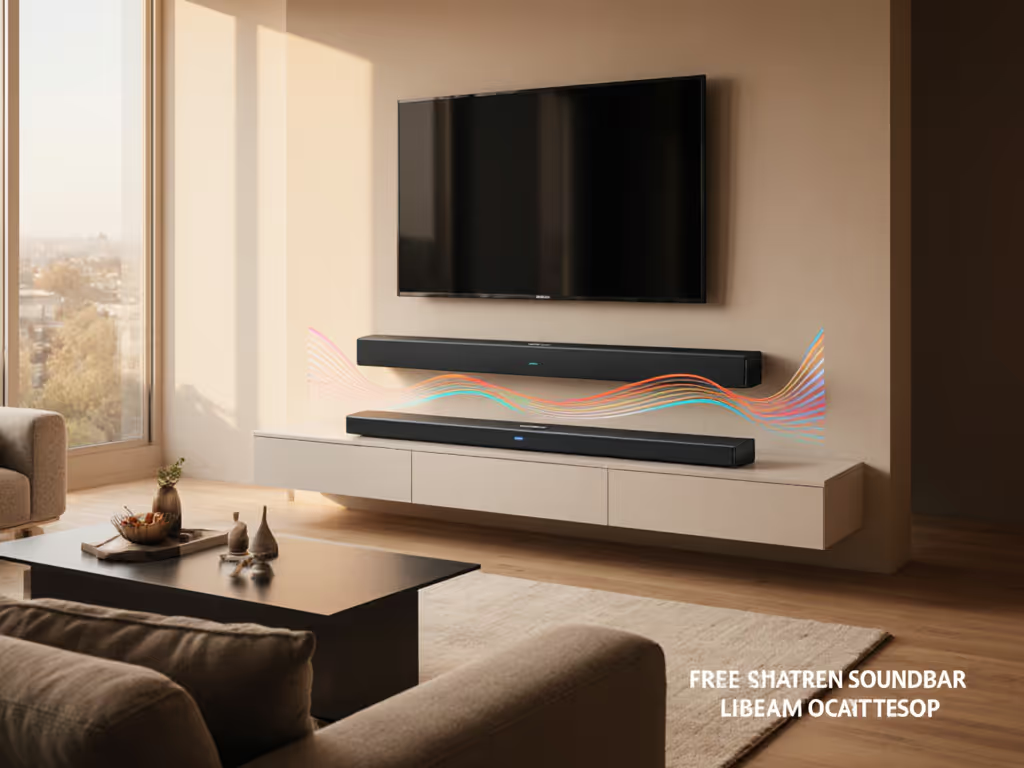
The Hidden Cost Factor
Samsung's $898 Q990D includes rears and sub, no upgrades needed. Sony's $799 HT-A9000 requires $300+ for equivalent bass/rear performance. But here's the truth: You don't need rears for dialogue clarity. If missing whispers is your #1 pain point, Sony's standalone bar often delivers better vocal intelligibility than Samsung's full system at lower volumes.
Your Action Plan: Choose Without Regret
Stop comparing specs. Match the system to your living room reality with this confidence checklist:
Before You Buy:
- Measure your seating distance (under 10 ft = Sony's processing shines)
- Test your TV's HDMI ARC/eARC port now (grab an old soundbar or borrow one)
- Plan your quiet-hours volume ceiling (ask neighbors: "What's acceptable at 10 PM?")
For Your Specific Room:
- 🏠 Small apartment/rental (under 250 sq ft): Sony HT-A9000 + sub (skip rears). Prioritizes dialogue clarity without rattling walls.
- 🛋️ Family living room (open-plan, 300+ sq ft): Samsung Q990D. Full speaker array fills dead zones where dialogue vanishes.
- 🎮 Gaming-focused setup: Sony HT-A9000 (verified 27ms latency). Samsung's Game Pro Mode boosts effects over voices.
Non-Negotiable Setup Steps:
- Enable Night Mode before calibration (it affects how room mapping works)
- Set subwoofer crossover to 80Hz (not 120Hz!) for cleaner dialogue
- Disable all TV audio enhancements ("Clear Voice," "Dialogue Boost"), since they conflict with the soundbar's processing
The True Test: Shared Enjoyment
Last weekend, Maria texted me: "Finished Knives Out without rewinds! Even my hard-of-hearing mom caught every clue." That's the magic. A perfect samsung wireless soundbar or sony audio bar isn't measured in watts, it's laughter instead of "What did he say?" at 9 PM.
Your next step isn't shopping. It's testing for your harmony:
- Watch The Crown S1E1 (episode 21 mins in): Do you hear Churchill's whispered "We shall fight on the beaches" without boosting volume?
- Play Dune sandworm scene (1h12m): Does the subwoofer rumble feel immersive below 50% volume? (No neighbor complaints!)
- Try console gaming for 15 mins: Can you hear enemy footsteps and chat audio simultaneously?
If any fail, keep searching. Your living room deserves one-remote harmony where every voice matters, not just the explosions. When you find that dialogue trackwin, you'll know. You'll finally finish the film... together.

